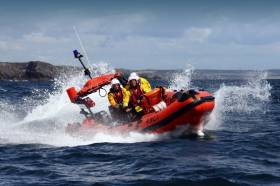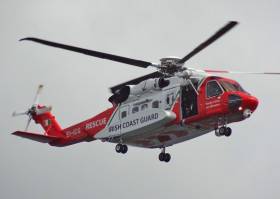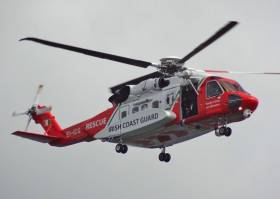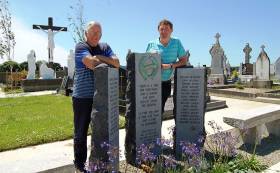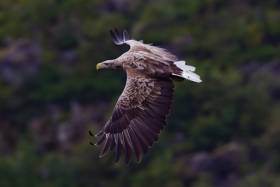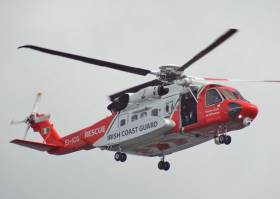Displaying items by tag: west cork
Union Hall Lifeboat Brings 15 Kayakers To Safety Off Castlehaven
#RNLI - A group of kayakers were brought to safety on Thursday night (18 August) by Union Hall RNLI after they got into difficulty during a night-time kayaking expedition off Castlehaven in West Cork.
The alarm was raised by one of the kayakers after two of the party became separated and the group requested assistance to make their way back to shore.
Union Hall RNLI's inshore lifeboat was launched at 10.45pm and proceeded to the scene, where they learned that the two kayakers originally thought missing had made it to safety on shore and the rest of the group requested assistance to get back to land.
It was decided to take the group off their kayaks and bring them onto the lifeboat before bringing them the short distance to Reen Pier.
The 15 people were helped onboard the Atlantic 85 lifeboat while their kayaks were towed back to shore.
"This was a large group for our inshore lifeboat to assist and our volunteer crew did well in ensuring that everyone was taken onboard quickly and safely," said Union Hall RNLI lifeboat operations manager John Kelleher.
"The weather conditions were challenging for the lifeboat crew to get from their base in Union Hall over to Castlehaven but thankfully conditions on scene were much calmer.
"With the call for help coming in quite early and the lifeboat crew on scene quickly, we were able to get the situation under control in a short time with everyone accounted for and safely brought ashore."
Deceased Fisherman Recovered Off West Cork Is Named
#WestCork - The body of a fisherman whose body was recovered off West Cork yesterday morning (Tuesday 16 August) has been named as Michael O'Brien of Ballydehob, according to The Irish Times.
As previously reported on Afloat.ie, the alarm was raised on Monday evening (15 August) after the 69-year-old failed to return to Schull from a solo fishing trip. His empty punt was found a short time later in Long Island Bay.
After the search resumed yesterday morning, a local boat located O'Brien's body in the water west of Schull off Ballydevlin in an area known locally as Amsterdam Rocks.
The Irish Times has more on the story HERE.
Search Ongoing For Fisherman Off West Cork
#Missing - The search resumed off West Cork this morning (Tuesday 16 August) for a man in his 60s who failed to return to Schull from a solo fishing trip yesterday evening, as The Irish Times reports.
RNLI lifeboats from Baltimore were joined by local fishermen and the Irish Coast Guard's Shannon-based helicopter Rescue 115 to sweep the area where the man's punt was found in Long Island Bay around 8.30pm.
The Irish Times has more on the story HERE.
Coastal Community Commitment – Podcast
There are moments and scenes which stand out in your mind. Stamped on mine is the day I went to a coastal village in West Cork and there, on the edge of a cliffside near Barryroe, close to Courtmacsherry Harbour, I saw the remains of a long-abandoned fishing family’s home, where two sons had died in the biggest sea battle of World War One – the Battle of Jutland on the thirty-first of May 1916. A short distance further up the same cliffside from that house, I was shown the home of another family whose son had died in the same battle. And, amazingly, in the parish of Barryroe, six men from the village had died in that sea battle, fought by a hundred thousand sailors in 250 ships of the British and German Navies. Eight thousand of those sailors were killed, including the six men from this village in West Cork. Another 29 sailors from Barryroe survived.
The interest of coastal communities in their history and culture, their pride in their heritage are impressive and are well underlined in this edition of my maritime programme, THIS ISLAND NATION, (click below for podcast) in the process of producing which I am fortunate to meet such communities.
In this edition I meet people from Courtmacsherry and Barryroe on the West Cork coastline and hear how they have researched and, as a result honoured, the amazing linkage between the area and the biggest sea battle of World War One – the Battle of Jutland, which is also described as the biggest sea battle ever. The statistics from it are, in terms of human destruction, terrible.
To walk into Lislevane Cemetery in Barryroe and see the memorial to those who fought and died at the Battle of Jutland is an emotional experience.
Sea Eagle Fledges In Bantry Bay
#SeaEagle - West Cork was witnessed its first sea eagle fledging in more than 125 years, as The Irish Times reports.
Local birdwatchers have been observing the young white tailed eagle since it left its nest on Garnish Island in Bantry Bay a fortnight ago.
The fledgling marks the first success for the seabird species in the county since a number of Norwegian birds were released in Killarney as part of a sea eagle reintroduction programme between 2007 and 2011.
The Irish Times has more on the story HERE.
Coastguard Airlifts Cliff Fall Casualty On West Cork Coast
#Coastguard - Shannon's Irish Coast Guard helicopter flew to the rescue of a man who survived a 21-metre fall off a sea cliff in West Cork yesterday morning (Monday 7 March).
According to the Irish Examiner, Rescue 115 was tasked along with the Toe Head coastguard unit to attend to the man who was spotted at the base of the steep cliffs at Sandy Cove near Castletownshend.
Both were on scene within 20 minutes of the arrival of the ambulance service, who treated the casualty before he could be safely winched on board the helicopter for transport to Cork University Hospital, receiving further treatment for hypothermia.
It's thought that conditions on the popular cliff path above were rendered unstable after recent heavy rains.
In other coastguard rescue news, Sligo's Rescue 118 was involved in the medevac of an ill crewman from a fishing boat west of Hags Head in Co Clare.
The foreign national, aged 30, complained of abdominal pains before he was flown from the trawler Arkh Angel to University Hospital Galway for treatment, as Galway Bay FM reports.
Schull Marina Project Needs Funding – Former Cork Mayor
Planning permission for a 235–berth marina is due to run out in 2017. General Election Candidate and former Mayor of Cork Cllr Alan Coleman has claimed that funding to get the marina and pier extension project in Schull up and running must be a priority for the next government in a report in the West Cork Times.
The €6million project requires €2.5 million Government funding, Coleman says.
Schull Harbour Sailing Club based in the picturesque harbour that is part of the Wild Atlantic Way says 'If the funding can beorganised this could be a major advance for marine activity around Schull and West Cork'.
Coleman claims the West Cork town 'has been let down by the present government despite three government TDs in West Cork'.
“This marina can be a huge attraction to the area to broaden tourist season and make Schull and the Mizen a destination of choice, says Coleman.
“I have seen the huge economic benefit of investing in three marinas in Kinsale and it has sustained a longer season and made the area more attractive for visitors. A more vibrant tourist season will make the rural economy more sustainable' he said.
More on this story from West Cork Times here.
Fisherman's Son Finds Father's Body In West Cork Harbour
#WestCork - The body of a Spanish fisherman has been found by his son in Castletownbere Harbour in West Cork after an incident yesterday evening (Tuesday 23 December).
As The Irish Times reports, it's believed the man, who was in his late 50s, may have slipped and fallen into the water while returning to his trawler some time after 7pm. More on this story HERE.
Travel YouTubers Make Waves Along Ireland's Wild Atlantic Way
#WildAtlanticWay - Popular travel YouTube duo the Vagabrothers have been posting clips from their current trip along Ireland's Wild Atlantic Way - including a "super relaxing" kayaking adventure off West Cork.
As TheCork.ie reports, Californian brothers and self-professed vagabonds Marko and Alex Ayling paddled in the company of Atlantic Sea Kayaking's Jim and Maria Kennedy as part of their extensive tour of the country at the invitation of Tourism Ireland.
Once back on shore, the Aylings were treated to a surprising seaweed lunch at the Union Hall café run by the Kennedy's own daughter.
The video above is just one of a series that's taken the brothers surfing in Strandhill, cliff-jumping in the Aran Islands and tucking into an oyster feast in Co Galway.
And it comes as Lonely Planet recommends the Wild Atlantic Way as the world's best offbeat coastal road trip, according to Galway Bay FM.
The whole of the Vagabrothers' Irish adventure so far can be found on YouTube HERE.
Humpback Wows Whale Watchers With Breach Off Baltimore
#MarineWildlife - Whale Watch West Cork have shared this incredible video of one of a humpback whale breaching off Baltimore this week.
The whale is one of three of the ocean giants seen feeding off Baltimore and nearby islands in recent days, and caught in some stunning shots by photographer Simon Duggan, among others.
Meanwhile, some no less impressive sights have been seen of Donegal, new video shows basking sharks - the second biggest fish in the sea - breaching off Malin Head.
Bren Whelan of Wild Atlantic Way Climbing told Independent Travel that it's been an "outstanding week" for marine wildlife watching on the North Coast, saying he himself had witnessed "over 300" basking shark breaches.
Basking sharks have been seen in big numbers the area all month long, with 15 spotted during the Irish Whale and Dolphin Group's Whale Watch Ireland 2015 event on the afternoon of 23 August alone.


























